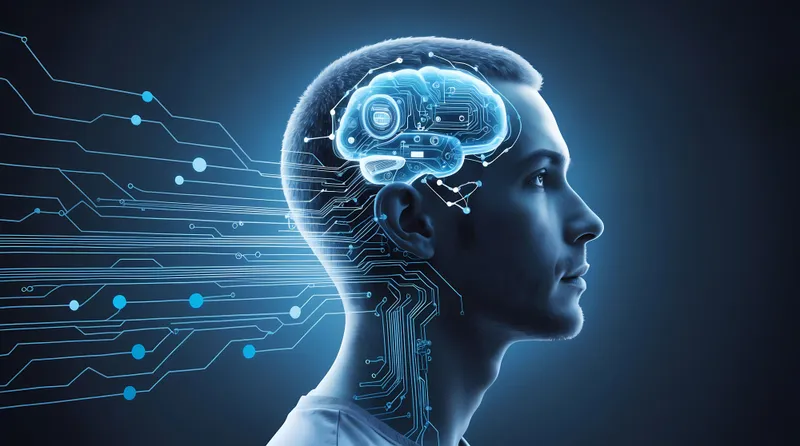Therapists working with ADHD know there’s no one-size-fits-all solution. Each client brings a unique mix of symptoms, history, and needs to the room. And while medication plays a role for many, therapy remains an essential part of long-term success.
The good news? Research has found a range of practical, evidence-based tools that therapists can use to help both kids and adults with ADHD thrive. Let’s break down those tools into real-world strategies you can bring into session. Clinicians seeking more structured support can also explore our Certificate in ADHD Assessment & Treatment, designed to deepen your skills with real-world, research-backed strategies.
Different Science-Backed Therapies for Adults & Children
No single therapy works for every person with ADHD. That’s why it helps to know what the research says about the most effective, adaptable types of therapy for both children and adults. Below are the leading approaches used in clinical practice today.
Cognitive Behavioral Therapy (CBT) for ADHD

CBT is one of the most well-supported therapies for ADHD in adults. It focuses on helping clients identify unhelpful thought patterns and replace them with more useful ones. In practice, this might mean:
- Teaching clients how to break down large tasks into smaller, more manageable steps
- Practicing time estimation and scheduling strategies
- Using checklists or visual reminders to support working memory
CBT also helps reduce anxiety and depression symptoms, which often occur alongside ADHD. A study in The Psychiatric Clinics of North America noted CBT’s strong impact on functional impairments like procrastination and distractibility.
If you’re unsure how to distinguish ADHD from overlapping conditions like anxiety or trauma, our assessment-focused course breaks down how to clinically evaluate symptoms using both subjective and objective tools.
Dialectical Behavioral Therapy (DBT) for ADHD
DBT combines behavioral techniques with mindfulness and emotional regulation. It was originally developed for borderline personality disorder, but recent studies have shown it also helps adults with ADHD manage emotional impulsivity and improve self-control.
DBT for ADHD often includes:
- Skills training in emotional regulation and distress tolerance
- Structured weekly practice with goal tracking
- Coaching to manage interpersonal challenges
For therapists working with clients who experience mood swings, frustration, or interpersonal conflicts tied to ADHD, DBT offers a valuable toolkit.
Neurofeedback for ADHD

Neurofeedback is a type of brain-based training that teaches clients to change their brain wave activity through feedback and repetition. While still debated, some research has found benefits for children and adults with ADHD in areas like attention, focus, and impulsivity.
It’s typically delivered using EEG technology over multiple sessions. Critics point out that neurofeedback may not work for everyone and isn’t always covered by insurance, but some therapists choose to pair it with traditional talk therapy or coaching tools.
Mindfulness-Based Therapy for ADHD
Mindfulness practices train the brain to focus, pause, and re-center. While that might sound simple, studies show real benefits for people with ADHD. Mindfulness-Based Cognitive Therapy (MBCT) and other mindfulness-based approaches have been found to reduce distractibility and improve emotional regulation in adults with ADHD.
These sessions might include:
- Breathwork and body scans
- Guided visualizations
- Mindful transitions between tasks
- Strategies for pausing before reacting
Even brief mindfulness exercises can help clients build awareness of triggers and gain better control of attention.
Coaching-Informed Therapy
While not a therapy type on its own, coaching tools focus on practical life skills like time management, organization, and goal-setting.
Therapists using this model may help clients:
- Build daily routines or weekly plans
- Use external supports like timers or reminders
- Create visual systems for tracking habits
- Set small, measurable goals and troubleshoot obstacles
Unlike traditional therapy, this style is often more collaborative, hands-on, and solution-focused. If that’s an area you want to build more confidence in as a therapist, this course on ADHD treatment approaches walks through strategies that work for both kids and adults.
Parent Training in Behavior Management

For children with ADHD, parent involvement is critical. Research has consistently shown that behavioral parent training improves outcomes for both kids and families.
In this approach, therapists work with parents to teach:
- Positive reinforcement and reward systems
- Clear communication strategies
- Consequences that are consistent and manageable
- Tools for reducing power struggles
It empowers parents to feel more confident while reducing stress in the home environment. Therapists working with younger clients may find our home study course on treating ADHD in children and adolescents especially useful, with step-by-step tools for behavior planning and family coaching.
Group Therapy for ADHD
Group therapy offers connection, validation, and peer learning, something many clients with ADHD find helpful. In adult groups, therapists often lead skill-building workshops, role-play sessions, or mindfulness exercises. In children’s groups, sessions may involve:
- Games that teach impulse control
- Group problem-solving challenges
- Supportive social feedback
For both populations, group work can reduce feelings of shame or isolation and help normalize the ADHD experience.
Looking for new tools to support ADHD when it’s layered with anxiety or depression? You can join our upcoming live webinar, ADHD, Depression, and Anxiety, to explore a neurodivergent-affirming lens that meets clients where they are.
Acceptance and Commitment Therapy (ACT)

ACT helps clients focus on their values and take action, even in the presence of difficult thoughts or symptoms. For ADHD, this might mean:
- Learning to “unhook” from perfectionist thinking
- Identifying core values like creativity, family, or learning
- Taking small, values-based actions even when motivation is low
ACT’s emphasis on psychological flexibility makes it a useful option for clients who feel stuck or discouraged by past challenges with ADHD.
Non-Medical Approaches to Battle Symptoms of ADHD
In addition to therapy, many clients benefit from complementary non-medical tools. These can support emotional regulation, focus, and sensory needs:
- Music therapy: Studies show music may boost attention and reduce hyperactivity, especially in children.
- Pet therapy: Working with animals can promote calm, structure, and emotional connection.
- Art therapy: Creating visual art offers a non-verbal outlet for processing emotions, managing frustration, and developing self-awareness.
- Outdoor play or movement therapy: Structured physical activity supports focus, mood, and executive functioning.
These strategies are especially valuable for younger clients or clients resistant to medication. Therapists can collaborate with families to find engaging, age-appropriate options.
If you’re interested in how trauma intersects with symptoms like emotional reactivity or executive dysfunction, register now for our live training on ADHD’s ripple effects, taught through a trauma-informed lens.
Medications for ADHD

Medication remains one of the most researched and widely used treatments for ADHD. Stimulants like methylphenidate (Ritalin, Concerta) and amphetamines (Adderall, Vyvanse) are often prescribed to manage symptoms.
They function by increasing dopamine and norepinephrine levels in the brain, enhancing attention and impulse control. Non-stimulant options, such as atomoxetine or guanfacine, may also be employed, particularly when clients encounter side effects or have other health concerns.
As a therapist, it’s important to:
- Understand what medications your client is using and how they’re responding
- Collaborate with prescribers if needed (with client permission)
- Help clients track symptoms and side effects
- Explore therapy as a way to build coping skills beyond medication alone
Many clients benefit from a combined approach of medication and therapy, especially when ADHD is accompanied by anxiety, depression, or trauma.
References
[1] Basiri, N., & Hadianfard, H. (2023). Adult ADHD Treatment Based on Combination of DBT and tDCS. Journal of Attention Disorders, 27(1), 57–66. https://pubmed.ncbi.nlm.nih.gov/36047471/
[2] Knouse, L. E., & Safren, S. A. (2010). CBT for Adult ADHD. The Psychiatric Clinics of North America, 33(3), 497–509. https://doi.org/10.1016/j.psc.2010.04.001
[3] Antshel, K. M. et al. (2011). Advances in Understanding and Treating ADHD. BMC Medicine, 9, 72. https://doi.org/10.1186/1741-7015-9-72
[4] Bachmann, K. et al. (2016). Mindfulness and the Adult ADHD Brain. Frontiers in Psychiatry, 7, 117. https://doi.org/10.3389/fpsyt.2016.00117
[5] Janssen, L. et al. (2015). MBCT vs. Treatment as Usual in ADHD. BMC Psychiatry, 15(1). https://doi.org/10.1186/s12888-015-0591-x
[6] Cole, P. et al. (2016). CBT/DBT Skills Training in Adult ADHD. Psychiatria Danubina, 28(Suppl-1), 103–107. https://pubmed.ncbi.nlm.nih.gov/27663817/
[7] Enriquez-Geppert, S. et al. (2019). Neurofeedback in ADHD: Current Evidence. Current Psychiatry Reports, 21(6), 46. https://doi.org/10.1007/s11920-019-1021-4
[8] Martin-Moratinos, M. et al. (2023). Effects of Music on ADHD. Journal of Medical Internet Research, 25, e37742. https://doi.org/10.2196/37742
[9] Healthline. (2022). ADHD Treatment Overview. https://www.healthline.com/health/adhd/treatment-overview